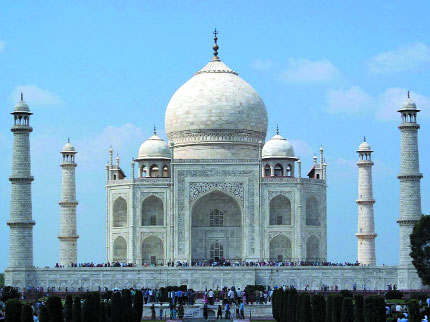Uttar Pradesh Chief Minister Yogi Adityanath may not agree that the Taj Mahal is intrinsic to Indian culture but it has topped the list of monuments with the highest revenue between 2015 and 2018. Going by Culture Minister Mahesh Sharma’s statement in the Rajya Sabha, the others in the top 10 include Agra Fort, Red Fort, Qutub Minar, Sun Temple in Konark, Mamallapuram, Ellora caves, the Khajuraho temples and the Ajanta caves in Aurangabad. Of course, the bigger question is that despite their popularity and the Archaeological Survey of India’s (ASI’s) year on year increase in expenditure, some of these have already made the headlines for their dismal state of maintenance. As for the pollutant-beaten Taj Mahal, we only seem to take note of it when the Supreme Court desperately appeals to our national conscience in its several rulings. Then there is the larger issue of crowd behaviour with Indians prone to engraving their own legacy on historical facades. There have been reports of old stones, friezes and statues being stolen and sold from sprawling complexes of the Sun Temple at Konark and the limb by limb decimation of figures in Ajanta and Ellora. Clearly, the resource-strapped ASI is finding it difficult to be a custodian and conservator.
Which is why there is no harm in engaging in private-public partnerships for ensuring upkeep. Countries like Italy, Egypt and around the Mediterranean have sought resource and management sharing with private majors like fashion houses and soft drink conglomerates. Varanasi’s ghats have been cleaned up and made presentable without tarnishing their cultural essence and ancient feel by private hotel chains. Delhi’s citizens have found summer evenings pleasurable again with the restoration of the Humayun’s tomb complex and the Sundar Nursery by the Aga Khan Trust. Both these heritage sites and the extended Nizamuddin Basti improvement project have not only restored Mughal architecture and gardens to their pristine glory but encouraged soirees, cultural confluences and most importantly, restored the city’s biodiversity hotspots. Many private players have restored Delhi’s havelis, converting them to heritage homestays. The big museum trusts around the world seek voluntary participation by experts and the community alike. And though critics may claim that corporates were encashing the footfalls while doing CSR, claiming tax benefits and were not entirely altruistic, fact is that signages or hoardings proclaiming their contribution have been limited to areas outside the core heritage arc. The privately run, family-owned Rajasthan forts have boosted the tourist economy and generated more resources for upkeep through specially curated walks and inner chamber access. PPP ventures have resulted in rescuing lost gems like the Nahargarh fort. Imagine a cleaned up Meena Bazaar elevated to the status of the Grand Bazaar of Istanbul. Of course, any private initiative has to be monitored and implemented by an expert committee under the supervision of the ASI. This should have multiple representation of historians, conservationists, archaeologists and keeper family trusts. The execution can be entrusted to those with a proven track record and depth of expertise. Heritage is our badge of honour and the more participatory we make it, the better we will respect and keep it.
Writer and Courtesy: The Pioneer








 OpinionExpress.In
OpinionExpress.In















Comments (0)